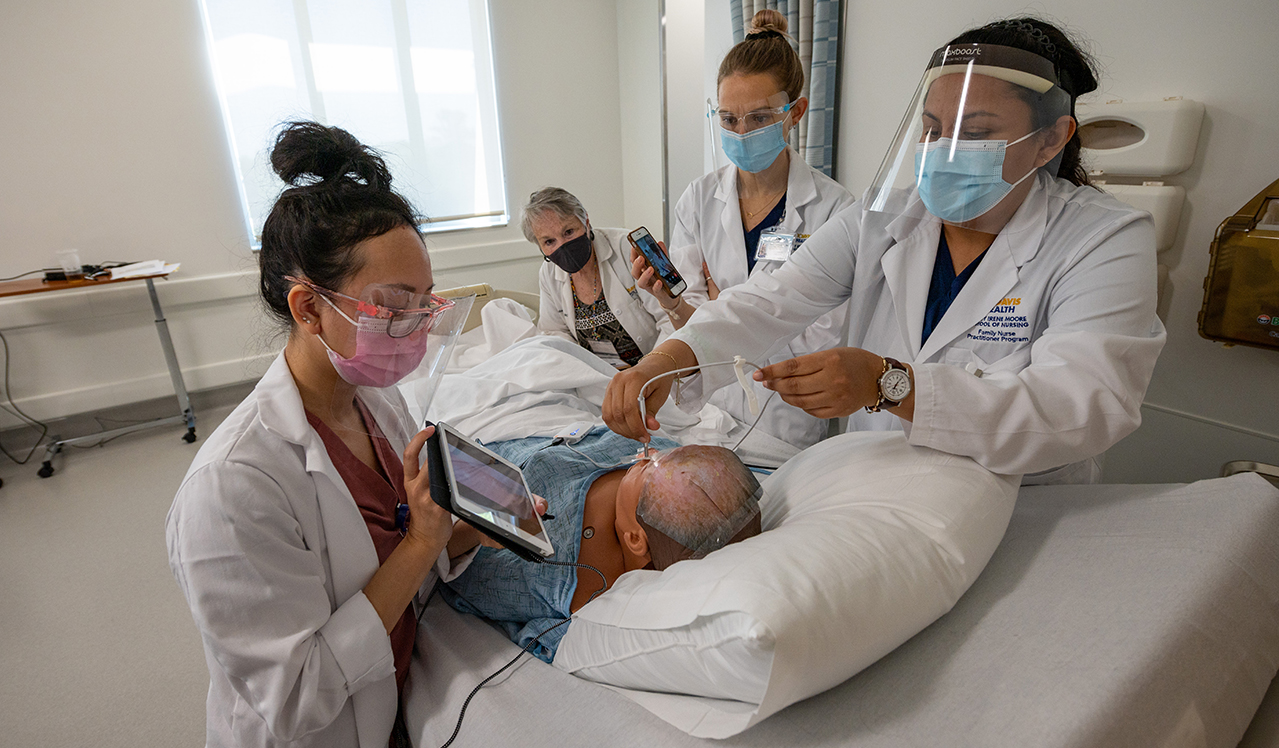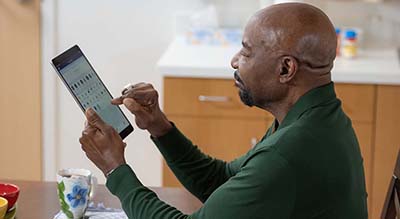When the COVID-19 pandemic hit and hospitals took on unprecedented volume, health care providers faced a new challenge. They needed to maintain contact with patients who adhered to stay-at-home orders and wanted to stay clear of the virus.
The result was a massive shift to video visits. On March 4, UC Davis Health had just 23 telehealth visits between providers and patients. Four weeks later, on April 1, health system providers conducted 1,054 visits via video and averaged nearly 1,100 a day for the entire month.
While telehealth has been a part of the family nurse practitioner (FNP) curriculum at the Betty Irene Moore School of Nursing at UC Davis for the past five years, faculty took note of its increased adoption in the pandemic. Their goal became to prepare future FNPs for that reality.
“We’re never going back to the structure we had before. We will have a hybrid health care delivery model moving forward — the best of telehealth and the best of in-person care,” says Gordon H. Worley, an assistant professor in the FNP program.
COVID-19 restrictions prevented faculty from being able to make use of the facilities used for prior simulations, so they innovated. Worley, along with fellow FNP Associate Professor Laura L. Van Auker, procured Bluetooth and software-linked digital auscultatory and optical equipment for use on iPads, mirroring the capabilities of commercial telehealth equipment.
First-year FNP students split into groups. One half on the exam side simulating a patient in a remote rural clinic and the other half serving as telehealth consultants 100 miles away. Rather than patient actors, students worked on manikins.
“Students transmitted their patient history and physical findings to a specialist providing a consultation for a child in a severe asthma attack,” Van Auker explains. “Through a video link, a remote consultant could see the patient. Students used a Bluetooth digital stethoscope so the consultant could listen to the patient’s lungs. Students also transmitted real-time images of the patient’s ears and throat with a video otoscope.”
In a second simulation of a migrant worker with skin lesions, students used a video otoscope as a dermascope that provided high quality dermatology images of lesions suggestive of cancerous conditions related to lifetime sun exposure.
The interactions ensure they understand both the capabilities of these interactions and their limitations. Van Auker says the students showed marked improvement in communication with their remote partner to complete their patient assessment and develop a treatment plan.
“The experiences were an excellent opportunity to handle the equipment and understand how easy it is to use both from a provider side using the item and the simulated specialist receiving the information while conferencing in,” says student Andrew Billings. “While I believe that the concept of bedside telehealth for primary care is still in its infancy, I do see it becoming a main staple resource in the years to come.”
Faculty effectively rose to the challenge, came up with innovative approaches and put them into practice with students. Everyone learned the value of adaptability. They even moved pandemic-induced experiences into existing clinical skills classes and future programs.
“Ultimately, we want students to develop and demonstrate their critical thinking and clinical reasoning, which guides them in the diagnostic and treatment decisions they make,” explains Kathryn Sexson, FNP program director. “COVID innovations from our faculty showed us new ways of ensuring our students can develop informed clinical decision-making abilities.”
When education returns to its pre-pandemic state, School of Nursing faculty will resume telehealth simulations with both diagnostic tools available in less well-resourced communities as well as more sophisticated interactive, remote-sensing diagnostic tools often available in more well-resourced communities. In the meantime, digital health tools offer a clear advantage for driving efficiency and safety in health care and are here to stay.
“We’re teaching students that this will be part of their practice regardless of where they land,” Worley says. “COVID-19 has really pushed the needle.”






